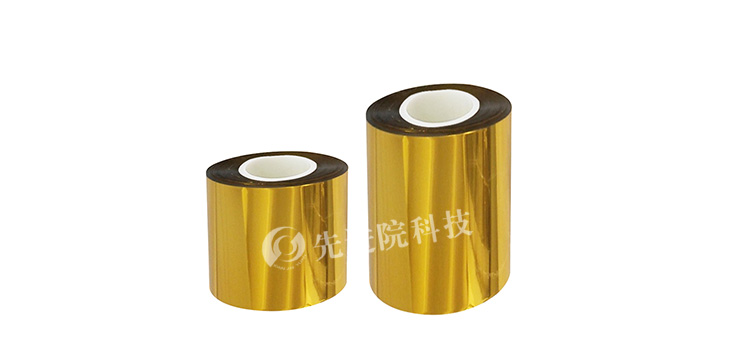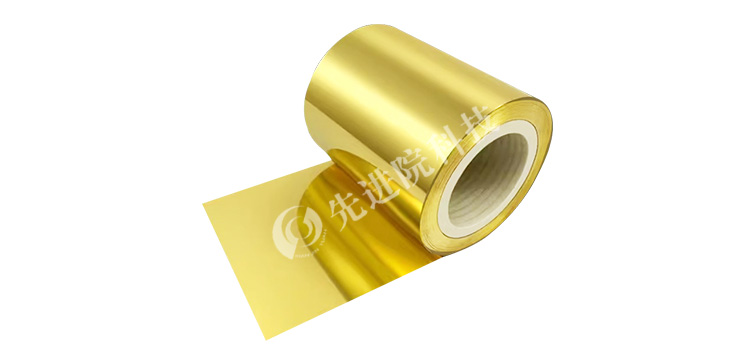With the continuous development of electronic devices towards miniaturization and high performance, the issue of heat dissipation has become increasingly critical.
Gold-plated copper foilDue to the excellent thermal conductivity of copper and the good oxidation resistance and conductivity of gold, it has been widely used in heat dissipation components. However, to fully utilize its heat dissipation potential, optimization needs to be carried out from multiple aspects.
Material selection and characteristic utilization
Copper itself is a good conductor of heat, with high thermal conductivity and the ability to quickly transfer heat. Purity is crucial when choosing copper foil as the substrate. High purity copper foil has fewer impurities, a more regular lattice structure, low thermal resistance, and is conducive to heat conduction. For example, copper foil with a purity of over 99.9% can increase its thermal conductivity by 5% -10% compared to products with slightly lower purity. Although the main function of the gold plating layer is not thermal conductivity, its oxidation resistance can prevent copper from being oxidized during use and reduce its thermal conductivity. Gold has good chemical stability and can form a dense protective film on the surface of copper foil, ensuring its long-term stable heat dissipation effect.
Optimize structural design
Increase surface area
The larger the surface area of the heat dissipation component, the larger the heat exchange area with the external environment, and the better the heat dissipation effect. The surface area can be increased by designing the gold-plated copper foil in a wavy, wrinkled, or structure with heat dissipation fins. In some laptop heat dissipation modules, wavy gold-plated copper foil is used, which increases the surface area by 30% -50% compared to flat copper foil, significantly improving heat dissipation efficiency.

Building a composite structure
Composite with other heat dissipation materials is also an effective way to optimize the structure. For example, will
Gold-plated copper foilComposite with high thermal conductivity ceramic materials, utilizing the high thermal conductivity and low thermal expansion coefficient of ceramics to compensate for the shortcomings of copper foil in certain aspects. This composite structure can ensure good thermal conductivity and enhance the mechanical performance and stability of the heat dissipation components.
Surface treatment enhances heat dissipation
Roughening treatment
Roughening the surface of gold-plated copper foil can increase its heat dissipation coefficient. By using methods such as sandblasting and chemical corrosion to create small bumps and depressions on the surface, the laminar boundary layer can be disrupted, promoting air convection and heat dissipation. Experiments have shown that the heat dissipation coefficient of gold-plated copper foil treated with roughening can be increased by 20% -30% under natural convection conditions.
Apply heat dissipation coating
Coating the surface of gold-plated copper foil with heat dissipation coatings such as graphene coating, nano carbon coating, etc. can further enhance the heat dissipation effect. These coatings have ultra-high thermal conductivity and can quickly transfer heat from the copper foil surface. At the same time, the coating can also provide protection and enhance the corrosion resistance of copper foil. Taking graphene coating as an example, the heat dissipation efficiency of gold-plated copper foil after coating can be improved by 15% -20%.

Improve installation and contact methods
Ensure a tight fit
When installing gold-plated copper foil heat dissipation components, it is necessary to ensure that they are closely attached to the heat source. Even small gaps can generate significant contact thermal resistance, hindering heat transfer. Thermal conductive silicone grease, thermal conductive tape and other filling materials can be used to fill the gap between the heat source and the gold-plated copper foil, reducing the contact thermal resistance. For example, after using high-quality thermal conductive silicone grease, the contact thermal resistance can be reduced by 50% -70%.
Optimize connection method
For those that require connection
Gold-plated copper foilComponents are connected using reliable methods such as welding and riveting, avoiding simple mechanical clamping to reduce thermal resistance at the connection. Welding can form a good thermal conduction path between copper foils, ensuring smooth heat transfer throughout the entire heat dissipation system.

Collaborative design of cooling system
Gold plated copper foil heat dissipation components do not work in isolation and need to be designed in conjunction with the entire heat dissipation system. In the air-cooled cooling system, the position, air volume, and direction of the fan should be designed reasonably to enable air to effectively flow through the surface of the gold-plated copper foil and carry away heat. In liquid cooling systems, ensure that the coolant can efficiently carry away the heat transferred from the gold-plated copper foil. For example, optimizing the flow rate and flux of the coolant can increase the overall heat dissipation efficiency of the cooling system by 10% -20%.
optimization
Gold-plated copper foilThe heat dissipation effect in heat dissipation components needs to be comprehensively considered from multiple aspects such as material selection, structural design, surface treatment, installation contact, and coordination with the heat dissipation system. Through these optimization measures, the heat dissipation performance of gold-plated copper foil can be fully utilized to meet the growing heat dissipation needs of electronic devices and ensure stable and efficient operation of the equipment.
The above data is for reference only, and specific performance may vary due to production processes and product specifications.







